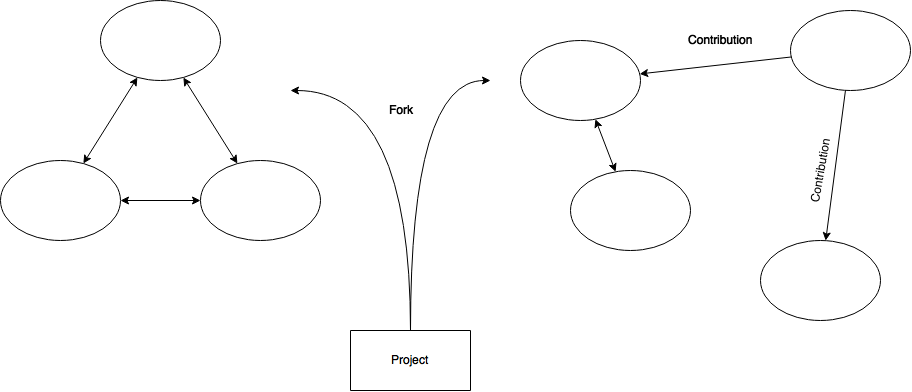CoDoIt
CoDoIt is a concept defining 3 ideas based on stigmergy and collaboration:
- CoThinkIt
- CoMeanIt
- CoFundIt
Where Capitalism failed to resolve conflicts between profit and humanist activities, making difficult to improve their objectives, CoDoIt tries a new approach with stigmergy.
What is Stigmergy ?
Stigmergy is a biological mechanism observed from ants and termites, where individuals act from traces left by other individuals.
This mechanism allows the construction of complex structures without coordination.

Every actions leave a trace, the more traces there is, the more actions there will be.
Hierarchical model
When an organization is built on a hierarchical model, a minority controls the group and the objective.

This can lead to frustration from the lower layers, as they are just executing decisions made by a minority, without any influence on the decision.
Cooperative model
When an organization is built on a cooperative model, the group controls individuals and the objective.

This can lead to slow decision making, as the group have to talk until a majority or unanimity is reached.
The decision will mainly be influenced by charismatic speakers, as they will rally more people.
Stigmergic model
When an organization is built on a stigmergic model, each individual contributes and forks projects.

In this model:
- each individual can fork the project to contribute with their own idea: creativity is not inhibited
- each individual can contribute to any fork: flexibility in the group is improved
- most promising forks gather more individuals: decision is a consequence, not a cause
- each model can be simulated within a group of individuals: compatibility with other models is kept
Our model
Our model is built on a stigmergic model applied to a network of people.
Key concepts
The model is composed of members, and traces:
- projects
- groups
- means of project making
Partners are people who contribute with less implication and transparency on projects/groups.
The result is dynamic, flexible and very resistant to failures.
Key rules
Autonomous members
Diversity is the key point. Like in every biological systems, balance is acquired through diversity. With a single mind model, errors could not be raised soon enough, and could be fatal to any project.
Common rules defined by a majority of members and a minority of partners
Rules are renewed during an annual Administrative Council. The influence in decisions is distributed among peoples.
Example:
- 66% of the decision must be taken by members, 34% by partners
- only 2 members are present, but 8 partners are present
- each member have
66 / 2 = 33%of influence in the decision - each partner have
34 / 8 = 4.25%of influence in the decision
Trust
Responsibility is shared by all members, which implies an improvement in quality testing.
Self-management
Social pressure is a key for auto-rule application among members. Developing or using tools to ease comunication will ensure self-management.
Transparency
Freedom of activities improves idea efficiencies, reputation and the network expansion.
Shared economy and means
It is up to the Administrative Council to decide how the network behaves. Because every one can take part in the decision making, all means for funding or making projects are shared by all.
Degrowth
Bigger is the network, lesser is the necessity for the member to provide funding for common activities.
Solutions
